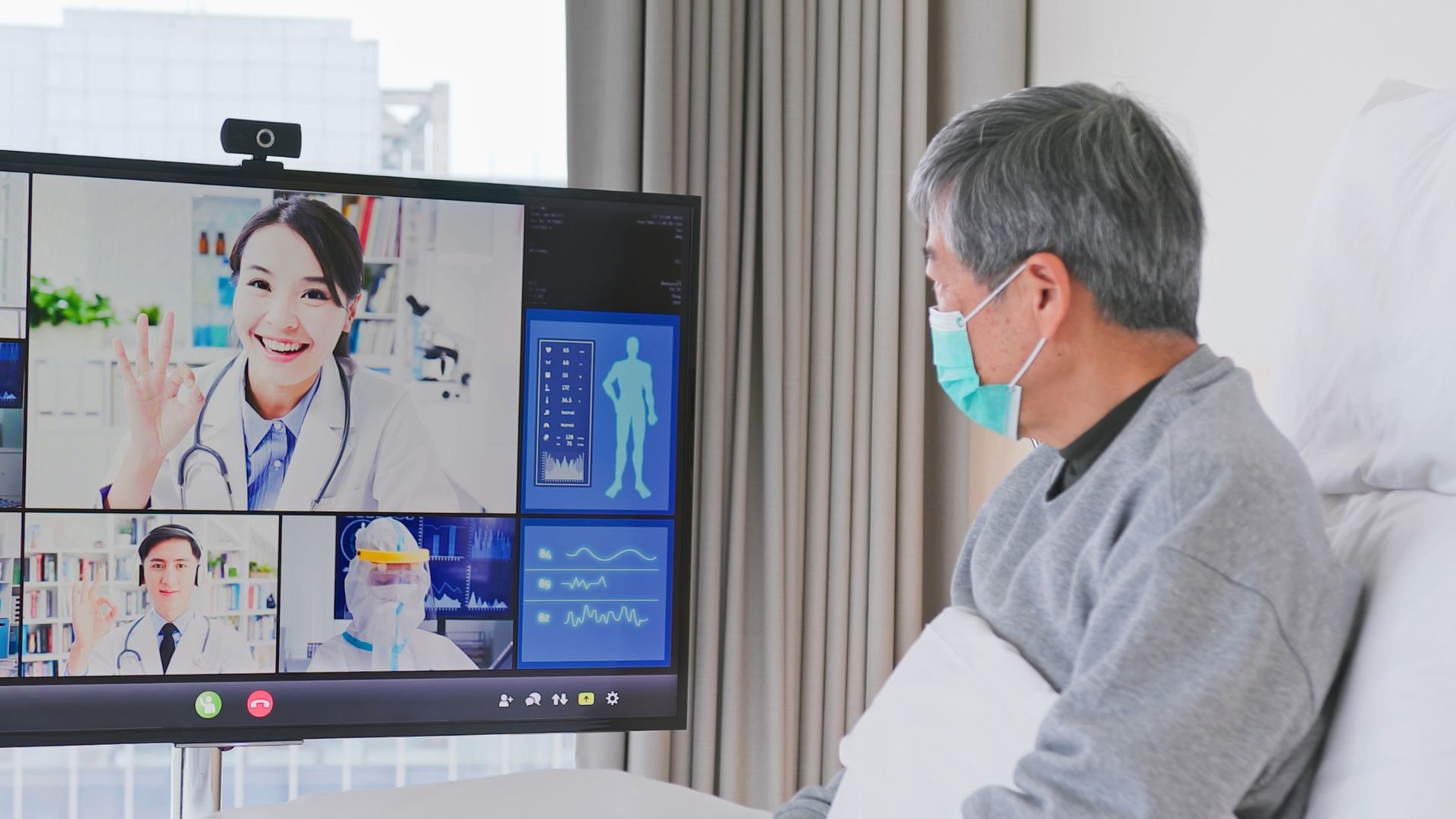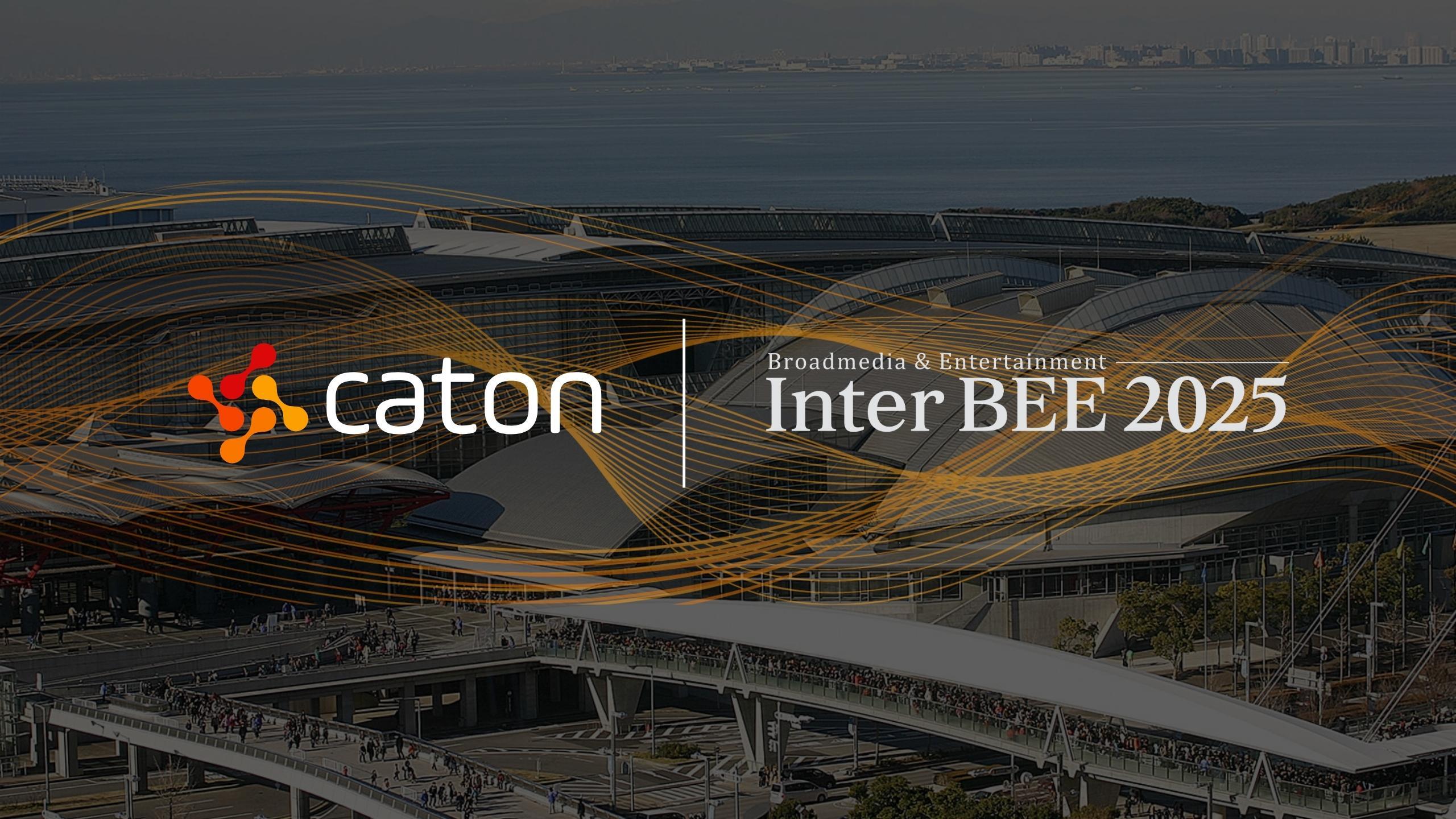
The rapid development of internet technology has not only changed people's lifestyles but has also profoundly impacted the healthcare industry. The healthcare sector faces widespread communication demands and a series of challenges, including the extensive distribution of the industry, high conference costs, difficulty in covering training comprehensively, and uneven distribution of medical resources.
It is estimated that by 2026, the internet healthcare market in China will reach 200 billion yuan. Fortunately, the emergence of online live-streaming provides solutions to these problems. It breaks through spatial limitations, making knowledge exchange and dissemination more convenient.
Caton Technology recently provided medical surgery live-streaming technology services for a tertiary hospital in Kunming, Yunnan Province. The conference brought together renowned experts and scholars from 17 countries and regions to conduct specialised academic lectures, discussions on hot topics, and live surgical demonstrations related to urological surgery's new concepts, technologies, and methods. The conference facilitated in-depth discussions on urological stones, tumour treatment, recent advances in urinary tract reconstruction, new technologies, the application of robotic surgery in urological surgery, and demonstrations of minimally invasive urological surgery. This significantly promoted international medical exchange and cooperation. Caton's high-quality live-streaming solution was crucial to the conference's smooth progress and ultimate success.
Market Challenges:
- Need for Clarity: Low-quality video during surgical live-streaming can hinder clear visibility of surgical details, affecting the understanding and judgment of the surgical process.
- Latency and Lag: Surgical live-streaming requires a stable network environment and high-quality image transmission technology. Lag and latency issues can make it challenging for viewers to keep up with the progress of the surgery, affecting the viewing experience.
- Unstable Network Connections: Surgical live-streaming demands a stable network connection. If the network is unstable, it can lead to interruptions or other issues, impacting the viewing and teaching experiences.
Market Opportunities:
Currently, medical live-streaming has gradually become a preferred method for doctors in medical training and learning. An increasing number of doctors are using medical live-streaming to enhance their professional skills and interact with remote and overseas doctors, aiming to provide superior medical services to patients.
However, the current technical solutions mainly evolve from video conferencing, resulting in some inherent issues:
- The video resolution and frame rate used in video conferencing are insufficient, leading to a lack of clarity and a sense of jerkiness in continuous actions. This significantly impacts the observation of surgical procedures.
- Conference venues typically lack dedicated lines connecting to hospital operating rooms; instead, they rely on temporary internet deployments. In such situations, maintaining high video quality introduces risks to transmission stability.
- The inherent unreliability of the internet itself brings potential issues like interruptions and buffering, factors that are seldom considered or addressed in current technical solutions.
Solution:
Caton discovered that many advanced medical imaging devices used in hospitals, such as endoscopes and surgical robots, already have 4K resolution output capabilities. Still, most video conferencing systems cannot support this ultra-high-definition quality. Combining the problems mentioned above with a new solution, Caton introduced a groundbreaking solution combining new hardware-based encoding/decoding with cloud technology.
Caton used its broadcast-grade 4K encoding/decoding device, Caton Prime, as the transmission and reception device for medical images. On the surgical side, the SDI output from the surgical equipment was encoded using Caton Prime. The transmission reliability over the internet was ensured using Caton Media XStream. Upon reaching the conference venue, the signal was decoded using the Caton Prime deployed at the venue, and the SDI output was directed to the live broadcasting control room and the professional surgical screen for external live broadcasting and on-site observation by doctors.
For this medical live-streaming conference, Caton designed a secure and reliable transmission solution from the hospital to the conference hotel venue, as shown in the diagram below:
/Telemedicine%20Case%20Study%20-%20Workflow.png?width=1671&height=761&name=Telemedicine%20Case%20Study%20-%20Workflow.png)
Conference Venue: The surgical room is connected to the conference venue, enabling the lead surgeon to impart their expertise during the surgery and respond to questions from on-site doctors. A 4K broadcasting station is employed to simultaneously receive the external view of the surgical room (captured through video conferencing signals) and the internal view of the surgical room (signals encoded by Caton Prime and decoded on-site for devices like laparoscopes), mixing them, and displaying two surgical scenes simultaneously on the large screen at the venue.
/Telemedicine%20Case%20Study%20-%20Picture%201.jpg?width=908&height=680&name=Telemedicine%20Case%20Study%20-%20Picture%201.jpg)
/Telemedicine%20Case%20Study%20-%20Picture%202.jpg?width=908&height=680&name=Telemedicine%20Case%20Study%20-%20Picture%202.jpg)
Surgery Site: The footage captured within the operating room includes an external view (depicting the surgeon's actions) and an internal view (output from medical devices encoded by Caton Prime). The exterior view of the surgery utilises a video conferencing system, capturing the surgeon's audio through a collar microphone and omnidirectional microphone inside the operating room. This audio is then synchronised with the external visual footage and transmitted to the main venue through the video conferencing system, establishing a connection with the venue's host.
For the internal view (including laparoscopes, endoscopes, laparoscopes, and Da Vinci robot visuals), Caton Prime employs HEVC encoding. The 4K parameters are set at 20M 4:2:2 10bit 3840p50, while the high-definition parameters are set at 10M 4:2:2 10bit 1080i/p59.94 to 1080p29.97. This is complemented by Caton Media XStream transmission services, transmitting the encoded content over the public internet to the venue for decoding. The end-to-end latency is controlled within 800ms.
/Telemedicine%20Case%20Study%20-%20Picture%203.png?width=908&height=682&name=Telemedicine%20Case%20Study%20-%20Picture%203.png)
/Telemedicine%20Case%20Study%20-%20Picture%204.png?width=678&height=904&name=Telemedicine%20Case%20Study%20-%20Picture%204.png)
In this event, Caton successfully broadcasted a total of 17 live transmissions of surgeries. Utilising ultra-high-definition resolution (up to 4K quality), it was possible to present the surgical procedures more realistically and vividly, allowing remote doctors to experience every detail of the surgery as if they were physically present.
Caton Prime's PQR (Image Quality Rating) Test:
Caton Prime uses a professional broadcast-grade video encoding chip based on the HEVC video encoding standard. It provides higher detail presentation at lower bitrates through smaller, more flexible macroblock divisions, supporting 4K resolution in 422 format. The image quality rating of Caton Prime's encoding/decoding through professional instrument measurements reached 1.5. A score below 2 indicates exceptionally high image quality restoration, making it difficult for viewers to distinguish between the original and the decoded images. Image restoration is crucial for surgical live streaming that aims for fine detail.
Caton Media XStream: Facilitating Remote Medical Live Streaming
Caton Media XStream transmission cloud service ensured the overall transmission stability of this surgical live streaming. Media XStream utilises AI-based intelligent routing to actively evaluate various route options and dynamically select the fastest and most efficient path, avoiding network congestion. It provides unparalleled reliability with an SLA exceeding 99.9999%, achieving error-free transmission services. In addition, Media XStream offers the following features:
Enhanced Interconnectivity: Caton utilises advanced transmission protocols, combined with forward error correction (FEC) and automatic repeat request (ARQ), to achieve optimal performance, ensuring low latency for better connectivity.
Global Scalability: Media XStream is deployed in over 30 cities globally, with over 100 PoP points in its extensive network. Media XStream seamlessly expands to provide access to anyone worldwide. This global coverage ensures adaptability to various needs and dynamic scenarios, consolidating its position as a scalable and reliable solution.
Comprehensive Assurance: Media XStream is designed for easy establishment and fully automated operation, providing users with self-configuration without requiring engineering support. It also offers real-time monitoring, diagnostics, and SLA reports, providing users with complete visibility and accountability and ensuring operation efficiency. Media XStream not only guarantees a reliable and transparent remote medical experience but also ensures high performance and security standards, offering peace of mind to users.
Conclusion:
Medical surgical live-streaming is increasingly adopted by doctors and hospitals for training and education, as well as to enhance professional competence. However, with the upgrading of surgical equipment, the existing surgical live-streaming technology has yet to keep pace with improvements in image quality and transmission stability. Caton Prime and Caton Media XStream address these shortcomings, creating a medical surgical live-streaming experience with higher definition and stability.

About Caton Technology
Caton Technology is a global leader in next-generation IP transport, shaping the future of media distribution with unparalleled innovation and customer service. We empower broadcasters and media companies to deliver exceptional real-time video over IP. Leveraging our ground-breaking distributed cloud platform and AI technology, our Caton Media XStream service revolutionizes IP delivery, assuring zero-error transmission and optimal performance. Exceeding six nines in reliability, we surpass leased lines, offering superior SLAs at competitive costs. With Caton, quality, performance and value are no longer mutually exclusive; our customers can have it all. Learn more about our cutting-edge solutions at www.catontechnology.com.


/Telemedicine%20Case%20Study%20-%20Workflow.png?width=1671&height=761&name=Telemedicine%20Case%20Study%20-%20Workflow.png)
/Telemedicine%20Case%20Study%20-%20Picture%201.jpg?width=908&height=680&name=Telemedicine%20Case%20Study%20-%20Picture%201.jpg)
/Telemedicine%20Case%20Study%20-%20Picture%202.jpg?width=908&height=680&name=Telemedicine%20Case%20Study%20-%20Picture%202.jpg)
/Telemedicine%20Case%20Study%20-%20Picture%203.png?width=908&height=682&name=Telemedicine%20Case%20Study%20-%20Picture%203.png)
/Telemedicine%20Case%20Study%20-%20Picture%204.png?width=678&height=904&name=Telemedicine%20Case%20Study%20-%20Picture%204.png)






